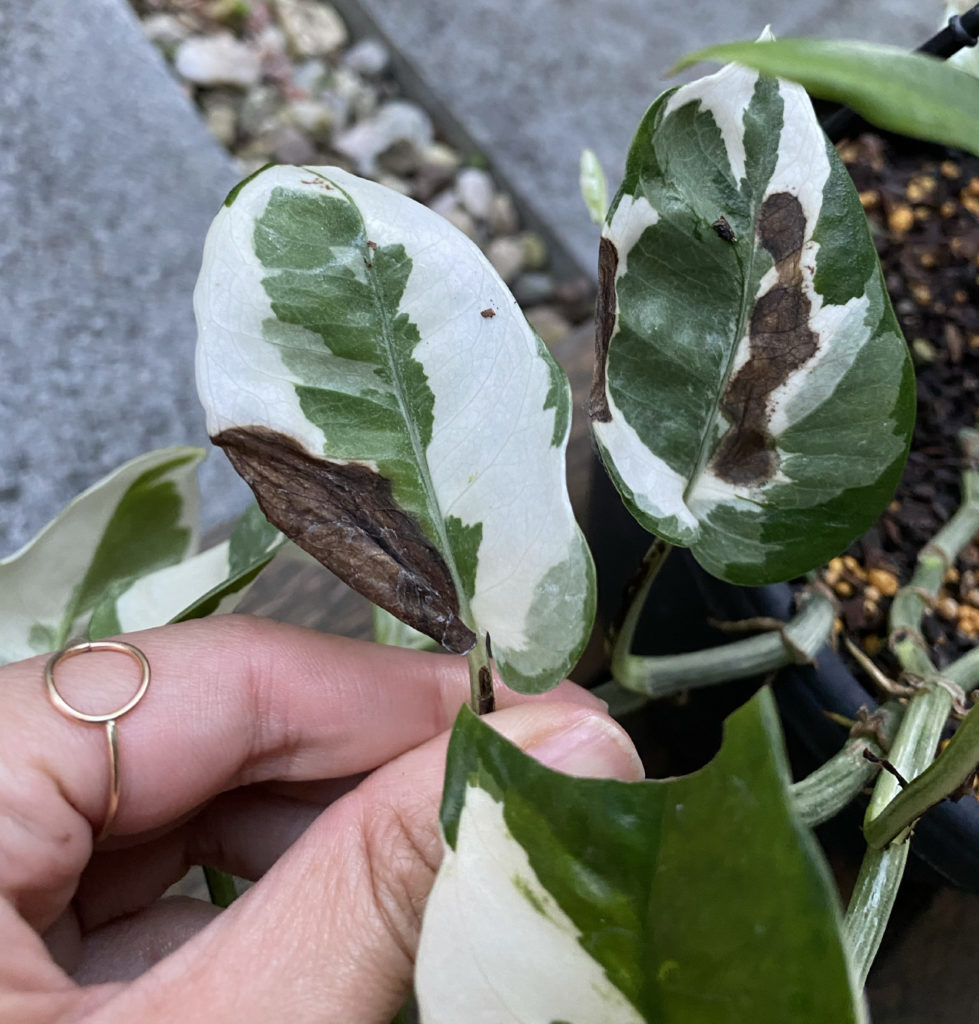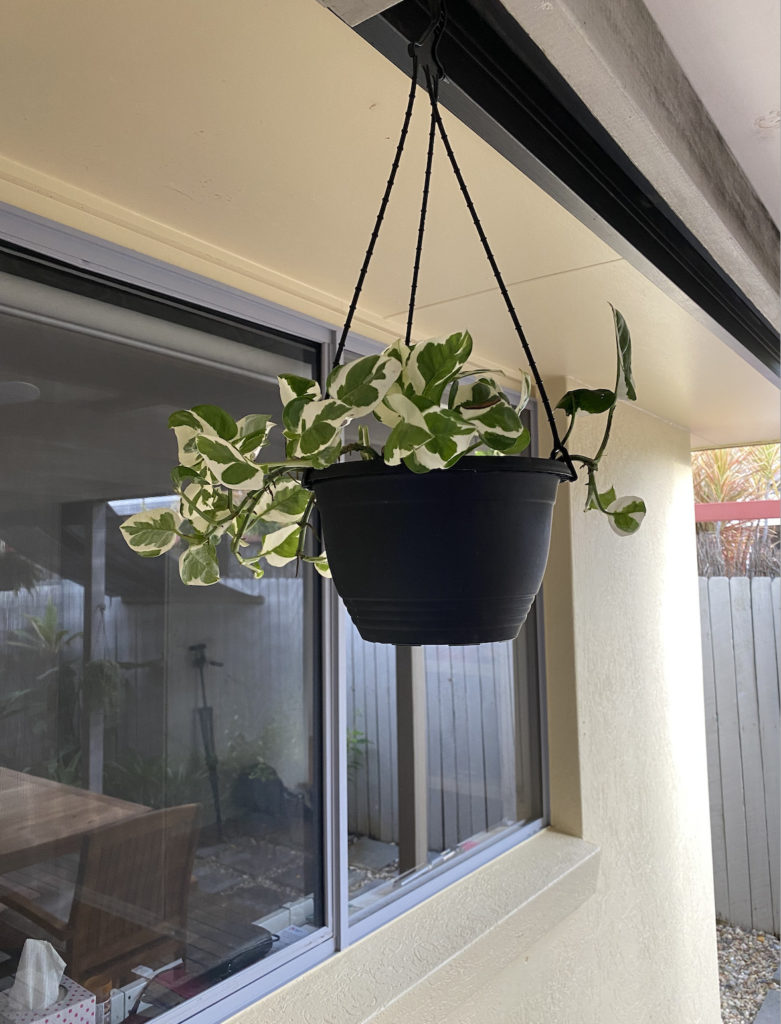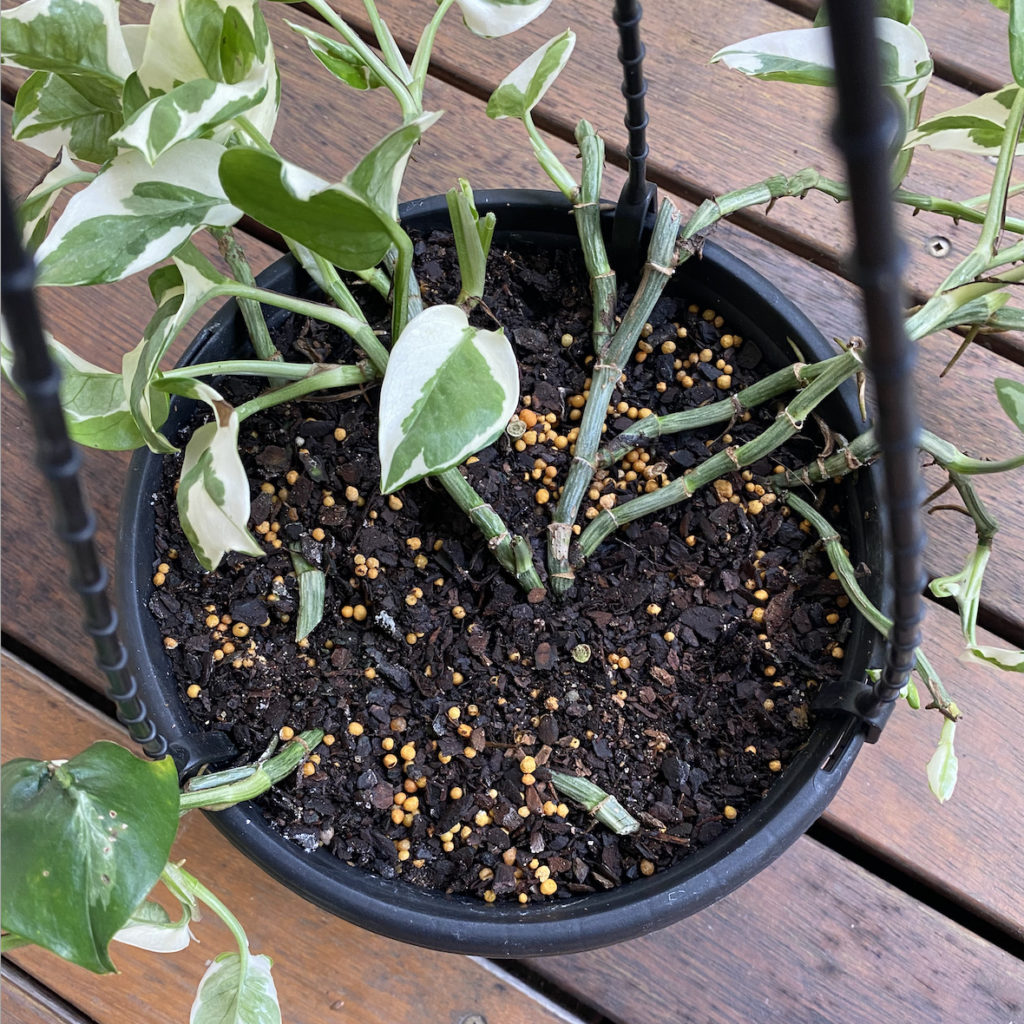Pothos snow queen brown spots
Plant: Pothos Snow Queen
How long have you had the plant? 1-6 months
Concerns:

I bought this plant with a few burnt leaves and the person said it was because of overwatering so it should sort itself out if I didn’t water as often, but it hasn’t.
I’ve only watered when it’s really dry at the top. I did have to put the plant a bit more ‘indoors’ as I had it in the deck and it was getting wet when it rained a bit. So brought it inside a bit more but it does mean it gets a bit less sun.
It also started to show some leaves that look like they’re being eaten, but this is new! I can’t find any bugs so at a loss there.
Light Situation:

How do you determine WHEN to water? I wait for the soil to become about halfway dry before watering
Describe HOW you water: I fully soak the soil, letting excess drain away.
Fertilizer? I use Worm wee from a local worm farm
Soil:

Darryl’s Analysis
Environment:
The current location where you have it is suitable in terms of light. Outside under a porch provides excellent “bright indirect light” – one or two hours of direct outdoor sun is tolerable if you’re able to keep up with watering.
Effort:
Your watering strategy sounds good. To minimize future appearance of brown patches, it’s good to occasionally flush the soil so excess water that drains through can leach away built up minerals. IMPORTANT: although this flushes out built up minerals, it also flushes out nutrients so be sure to keep up with fertilizing. And remember that this only minimizes the brown patches – you can never completely prevent it!
If you want your plant to grow well in the long run, you must use fertilizer – more info on fertilizers here.
Expectations:
When people say “it should sort itself out if you water less” – this is exactly the reason why I say “overwatering” is the worst concept in houseplant care. There’s nothing you can do to make these damaged leaves become green again so if you find them unsightly, just cut them off. If your soil is occasionally leached (as mentioned above) and aerated (by gently poking the soil with a chopstick), you can lessen the occurrence of new brown spots, but there’s no need to worry if they happen every now and then if your growing conditions are good since new leaves will be growing, offsetting the blemishing/dying of older leaves.
The reality is older leaves will eventually get brown or yellow and will fall off by no fault of yours. Browning can never be reversed or completely prevented. As long as the overall plant is healthy and growing in the right light (which yours seems like it is), then you can enjoy the overall plant even if a few leaves die off here and there.
If you want to learn a healthy, balanced approach to houseplant care, check out my online course or my book.
Tired of your houseplants dying on you?
Sign up and I’ll do my best to help them live their best lives!